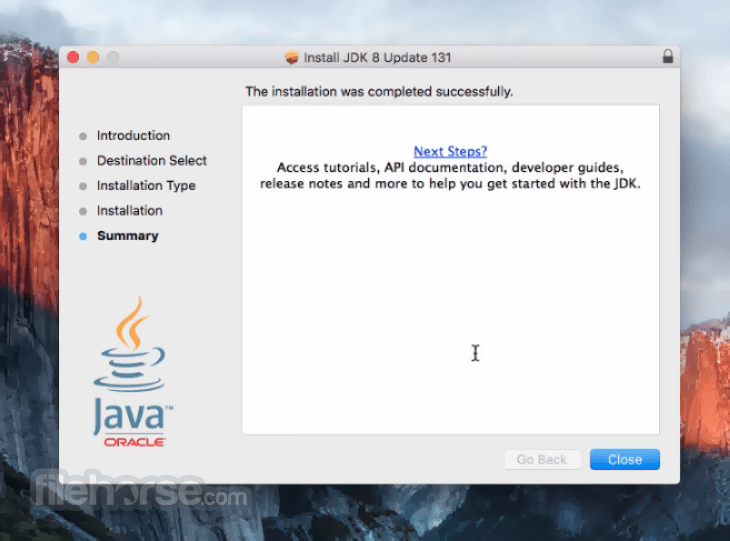JRE Downloaded File. Depending on your processor, the downloaded file has one of the following names, where version is the update number: jre-8u version-macosx-amd64.dmg. Jre-8u version-macosx-x64.dmg. Java SE 8 Archive Downloads (JDK 8u202 and earlier) Go to the Oracle Java Archive. The JDK is a development environment for building applications using the Java programming language. Double-click on the package icon, and follow the instructions to install. When the installation has completed, click on Done. At this point, you may close up the window and drag jdk-8u65-macosx-x64.dmg to the Trash. Installing Eclipse. If you already have Eclipse installed on your Mac, you need to get rid of it.
Java is no longer installed with a OS X 10.11 El Capitan clean install, and you’ll find that after updating a Mac a prior version of JRE may no longer function.
You may come across when trying to use some particular applications or web content, “This application requires the legacy Java SE 6 runtime which is unavailable for this version of OS X.” error message, which means if you want to run that app you’re going to need to use an older version of Java.
If you do not need Java, you should not install Java. Java is, and always has been, the source of many security holes.

Here’s how you can install JRE (Java Runtime Environment).
Step 1. Open Safari and go to the Oracle Java downloads page and download the JRE .tar.gz version. You should end up with a file named something similar to jre-8u65-macosx-x64.tar.gz.
Step 2. Go to your Downloads folder and extract the JRE download or use Terminal to extract files:

Step 3. Open Terminal
Step 4. Edit the Info.plist file within to enable the JRE to be used from the the command line, and from bundled applications:
Step 5. Move the JRE folder to the correct location:
Type password on prompt.
Be sure you are in the correct directory (the JRE folder) when you issue this command, because it will move your current directory to /Library/Java/JavaVirtualMachines/!
Step 6. Create a link to add backwards compatibility for some applications made for older Java versions:
You should be done now, so try and open the application. If it does not work, some applications require legacy Java 6 to be installed.
You can have it installed without actually using it, however, it’s possible to trick the applications into thinking legacy Java 6 is installed, without actually doing so.
Step 1.Disable SIP (System Integrity Protection) in OS X El Capitan. Here is tutorial to disable and enable SIP.
Jre 8u65 Mac Os X X64 Pkg For Mac Iso
Step 2. Trick some applications into thinking that legacy Java 6 is installed by creating two folders with the following commands in Terminal:
Jre-8u65-macosx-x64.pkg For Mac
Step 3. Don’t forget to enable SIP again after creating these directories.
Latest Version:
Requirements:
Mac OS X
Author / Product:
Oracle / Java Runtime Environment for Mac
Old Versions:
Filename:
jre-8u65-macosx-x64.dmg
MD5 Checksum:
6f645bc573b574f9f4283fc64f5b5e72
Jre 8u65 Mac Os X X64 Pkg For Mac High Sierra
The Java Runtime Environment for macOS (JRE) provides the libraries, the Java Virtual Machine, and other components to run applets and applications written in the Java programming language. In addition, two key deployment technologies are part of the JRE: Java Plug-in, which enables applets to run in popular browsers; and Java Web Start, which deploys standalone applications over a network. Many cross platform applications also require Java to operate properly.
Note: Requires 64-bit web browser. Administrator privileges for installation.
Also Available: Download Java Runtime Environment for Windows
